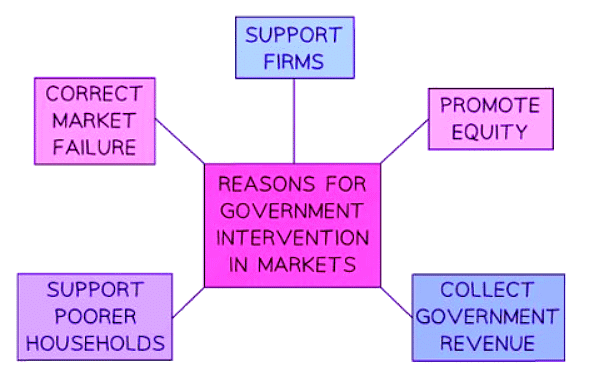Year 11 Exam > Year 11 Notes > Economics for GCSE/IGCSE > Characteristics of a Mixed Economic System
Characteristics of a Mixed Economic System | Economics for GCSE/IGCSE - Year 11 PDF Download
Characteristics of a Mixed Economic System
- An economic system must determine how to address the three crucial economic questions. These questions include:
- What goods should be produced? For instance, should a nation prioritize manufacturing more weaponry for defense purposes or invest in building more educational institutions for the youth?
- For whom should these goods be produced? Should products and services cater only to those with financial means, or should they be accessible to all members of society?
- How should these goods be produced? Is it more prudent to rely on manual labor, or should the economy focus on technological advancements and automation?
- A mixed economic system represents a fusion of market and planned economies. In this system, individuals, businesses, and the government collectively own and manage resources for producing and distributing goods and services.
- Practically, most countries worldwide operate as mixed economic systems, with varying degrees of government intervention. For instance, China exhibits more centralized control compared to the United States.
- The extent of government involvement influences the economic direction of a nation. Greater government intervention tends to steer the economy towards planned economic practices.
Governments Intervention

- To Address Market Failures:
- Market inefficiencies may occur where resources are not optimally allocated.
- Individuals and firms, driven by self-interest, may not correct these inefficiencies on their own.
- Government intervention can influence production and consumption levels to address these issues.
- Generating Government Revenue:
- Governments require funds to provide essential services and public goods.
- Revenue is obtained through various interventions like taxation, privatization, and sale of licenses.
- Promoting Equity:
- Interventions aim to lessen the wealth gap between different socio-economic groups.
- Supporting Industries:
- Governments may choose to support key sectors to enhance their competitiveness in the global market.
- Aiding Low-Income Households:
- Poverty impacts individuals and the economy negatively.
- Interventions include income redistribution through progressive taxation to alleviate poverty effects.
Question for Characteristics of a Mixed Economic SystemTry yourself: What is the main purpose of government intervention in a mixed economic system?View Solution
The document Characteristics of a Mixed Economic System | Economics for GCSE/IGCSE - Year 11 is a part of the Year 11 Course Economics for GCSE/IGCSE.
All you need of Year 11 at this link: Year 11
|
71 videos|104 docs|48 tests
|
FAQs on Characteristics of a Mixed Economic System - Economics for GCSE/IGCSE - Year 11
| 1. What are the main characteristics of a mixed economic system? |  |
Ans. A mixed economic system combines elements of both capitalism and socialism. It allows for private ownership of property and businesses, while also incorporating government intervention in certain areas such as healthcare, education, and infrastructure.
| 2. How does a mixed economic system benefit society? |  |
Ans. A mixed economic system provides a balance between individual freedom and societal welfare. It allows for innovation and competition in the marketplace, while also ensuring that essential services are provided to all members of society.
| 3. What role does the government play in a mixed economic system? |  |
Ans. In a mixed economic system, the government plays a regulatory role by setting and enforcing rules to ensure fair competition and protect consumers. It also provides public goods and services that may not be efficiently provided by the private sector.
| 4. How do mixed economic systems differ from purely capitalist or socialist systems? |  |
Ans. Mixed economic systems combine elements of both capitalism and socialism, whereas purely capitalist systems rely on free market principles with minimal government intervention, and socialist systems involve government ownership and control of the means of production.
| 5. Can a mixed economic system evolve over time? |  |
Ans. Yes, mixed economic systems can evolve over time as economic and social conditions change. Governments may adjust the balance between market forces and government intervention based on the needs and priorities of society.
Related Searches















